From speckled blue to black and white, the Texas Heeler has a range of beautiful coat colors.
Influenced by its parent breeds, the Australian Shepherd and Australian Cattle Dog, this mix inherits a diverse gene pool of possible coat colors and patterns.
In this article, I will break down the different Texas Heeler coat colors and patterns.
Let’s dive in!
Influence of Coat Colors from Parent Breeds
The Texas Heeler is a fascinating mix of two parent breeds: the Australian Shepherd and the Australian Cattle Dog.
The coat colors of a Texas Heeler are inherited from both parent breeds. Each breed has its array of unique and vibrant colors.
The Australian Shepherd, also known as an Aussie, comes in various coat colors and patterns.
These may include black, blue merle, red merle, or red, often with beautiful white or tan markings.
On the other hand, the Australian Cattle Dog, often referred to as a Queensland Heeler, has two primary coat colors: blue and red, with distinct mottled or speckled patterns.
When these two parent breeds are combined to form the Texas Heeler, you get a fascinating mix of coat colors and patterns.
Some standard colors include:
- Black
- Blue merle
- Blue ticked
- Red ticked
- Red merle
- Tan
- Brown
- White
The specific coat pattern and color a Texas Heeler inherits depend on the genetics of its parent breeds.
For example, suppose one parent is a blue merle Australian Shepherd and the other is a blue Australian Cattle Dog. In that case, the litter is highly likely to produce puppies with various blue shades, from merle to ticked.
As a mixed breed, Texas Heelers can have a weatherproof double coat, which can vary from short to medium length, generally being smooth and soft. Their coat does shed moderately.
Thanks to these mixed genetics, each Texas Heeler is unique in appearance and personality, embodying traits from both parent breeds.
In the following sections, I’ll explore some of the standard colors in Texas Heelers.

Black

I’ve always been fascinated by the Texas Heeler breed and its various colors, especially the striking black coat.
While researching and talking with owners, I’ve discovered that the black Texas Heeler is beautiful and unique compared to other coat colors.
The black Texas Heeler typically has a dominant black coat, often inherited from its Australian Shepherd parent.
You might find some black Texas Heelers with patches of white or tan trim on their feet and legs, adding charm and diversity to their appearance.
As I explored further, I discovered that a black Texas Heeler’s coat could either be solid black or mixed with other colors, creating patterns like black and blue merle.
These patterns can introduce a range of hues into their coat, from lighter grays to vibrant blues.
Regardless of the specific color combination, the black Texas Heeler is an eye-catching dog that stands out from the crowd.
White

In my research on Texas Heelers, I discovered that white is an exciting and rare color variation for this breed.
It appears that white is most commonly seen as a trim on their feet and legs, but in some cases, it can be a more prominent color in their coat.
I’ve observed that many Texas Heelers have a coat color that leans more towards black, blue merle, or blue ticked, but I’ve also seen a few examples that display a more significant part of white in their coats.
In these cases, white usually appears in combination with other colors, such as black or blue, creating a unique and beautiful look.
From speaking with Texas Heeler owners (and looking at pictures), I’ve learned that white coloring can also appear on the dog’s face, chest, and belly.
The placement and extent of the white color vary from dog to dog, making each Texas Heeler uniquely beautiful in its own way.
Here’s a brief breakdown of where I’ve noticed the white coloration tends to appear most often:
- Feet and legs: This is where the white trim is most commonly seen on the Texas Heeler. It adds a nice contrast to their darker coat colors.
- Face: The white may also appear on the muzzle, cheeks, or forehead of the Texas Heeler.
- Chest and belly: It’s also possible to see white coloration on their chest and belly, adding a lovely touch to their appearance.
It’s important to note that the specific amount of white on a Texas Heeler can be pretty variable.
The combination of genetics from both parent breeds means each Texas Heeler may have a unique color pattern.
While white is not the predominant color for Texas Heelers, it definitely adds a charming touch to their appearance.
Black and White
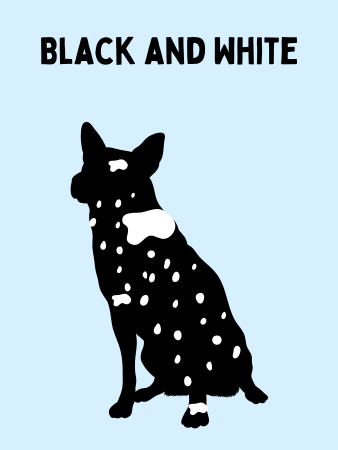
Of all the TX Heeler colors, one combination that particularly stands out to me is their black and white coat.
In my research, I discovered that the black-and-white combination is one of this breed’s most common and striking color patterns.
I learned that the black and white Texas Heeler coat’s appearance varies depending on their ancestry.
For example, some black and white Texas Heelers may inherit more of the Australian Cattle Dog’s coat pattern (speckled or ticked), while others may have a coat that resembles the Australian Shepherd’s.
I found that black and white Texas Heelers may also showcase the following features:
- Splotches of black-and-white coloring
- Mottled or speckled white or black
- Merle coats that feature white or black patches
The black and white Texas Heeler is a stunning example of the breed’s wide range of colors and patterns.
Brown

While the Texas Heeler is more commonly found in black, blue merle, or blue ticked colors, I have encountered some brown-colored Texas Heelers in my research.
These beautiful dogs may carry this brown color from their Australian Shepherd parent, as this gene is not as prevalent in the Australian Cattle Dog.
However, I’ve noticed that the specific shade of brown can vary quite a bit among individual dogs.
In some Texas Heelers I’ve seen, the brown color is more of a rich chocolate or liver hue.
This coats their entire body, strikingly contrasting dogs with similar markings but with black or blue coats.
Another shade of brown I’ve found in these dogs can be a lighter, more muted tan or cream color.
This is typically seen in combination with darker coat colors, such as black or blue merle.
In addition to the varying shades of brown, some Texas Heelers have white or tan trim on their feet and legs.
This is often accompanied by white markings on their face and chest, which provides an overall picture of a dog with stunning, unique coloring.
Tan
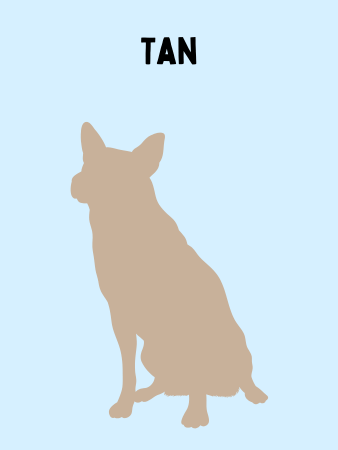
Of all the Texas Heeler coat colors, one of the most beautiful ones, in my opinion, is the tan variety.
I discovered quite a few details about the tan Texas Heeler coat that are worth knowing for anyone interested in this lovely mixed breed.
Thanks to conversations with owners and breeders, I’ve learned that the tan color in Texas Heelers comes from both their Australian Cattle Dog and Australian Shepherd ancestry.
Although tan isn’t the most common coat color, it’s still a striking feature that gives these dogs a unique look.
While the tan coat might be uniformly distributed across the body, it is also common for a tan Texas Heeler to have patches of different shades in various areas, especially around the feet and legs.
This mixture of colors can make the Texas Heeler even more eye-catching and visually pleasing to potential owners who appreciate variety in coat colors.
In addition to the tan coat color, Texas Heelers can sometimes exhibit tan markings on other coat colors, such as black or blue merle.
Depending on the dog’s genetic makeup, these markings can appear in different patterns and intensity levels.
Red

The red-coated Texas Heeler is one of my favorite variations, standing out amongst their diverse coat colors.
I’ve learned that red Texas Heelers have a distinct speckled pattern with solid red markings.
These markings result from red hairs interspersed through their white coat, which all Australian Cattle Dogs (ACD) puppies are born with.
The red coat may vary in intensity and shade, which can be affected by genetics and environmental conditions.
Some red Texas Heelers appear more vibrant, while others may have a softer, more subdued hue.
In my study of Texas Heeler coat colors, I’ve discovered that their coat can have other markings and patterns besides the predominant red speckling.
For instance, it is common to come across red Texas Heelers with:
- White trim on their feet and legs
- Tan markings around their faces and ears
- Patches of different shades of red on their bodies
It’s also important to note that every red Texas Heeler has unique coat markings and patterns.
This is one of the many reasons why I am so captivated by this breed.
In summary, red Texas Heelers not only display a striking coat color, but they also have a variety of markings, patterns, and shading that make each individual truly unique.
Red Merle
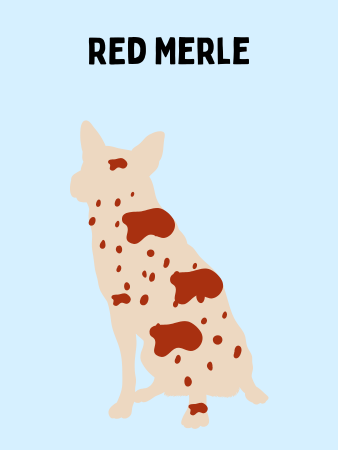
One particularly striking color variation I found is the red merle coat.
The red merle coat of a Texas Heeler is characterized by a unique pattern of red and white coloring on their short to medium-length fur.
This pattern results from the blend of the dog’s dominant red color with patches of lighter hues.
Although most Texas Heelers have black, blue merle, or blue ticked coats, the red merle color variation adds a touch of uniqueness to the breed.
Blue Merle
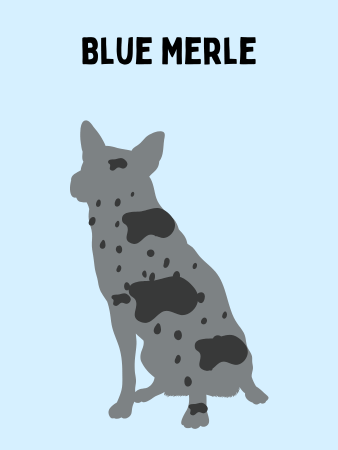
One of this breed’s most attractive and eye-catching coat colors is the blue merle.
It is one of the three primary colors for Texas Heelers, alongside black and blue.
The blue merle coat pattern results from the black base color mixed with white hairs, creating a beautiful and unique marbled or speckled effect.
Sometimes, they can also have white or tan trim on their feet and legs.
However, it is important to note that each blue merle Texas Heeler can have a uniquely varied pattern. No two dogs will look exactly the same!
Their coat is typically short to medium in length (about 1 to 3 inches long), featuring smooth fur that can really emphasize the marbled effect of the blue merle color.
Coat Patterns
Along with various colors, the Texas Heeler has various coat patterns.
In this section, I’ll explore some of the most common patterns: Tricolor, Merle, Speckled, and Mottled.
Tricolor
The tricolor pattern typically consists of three colors: black, white, and tan.
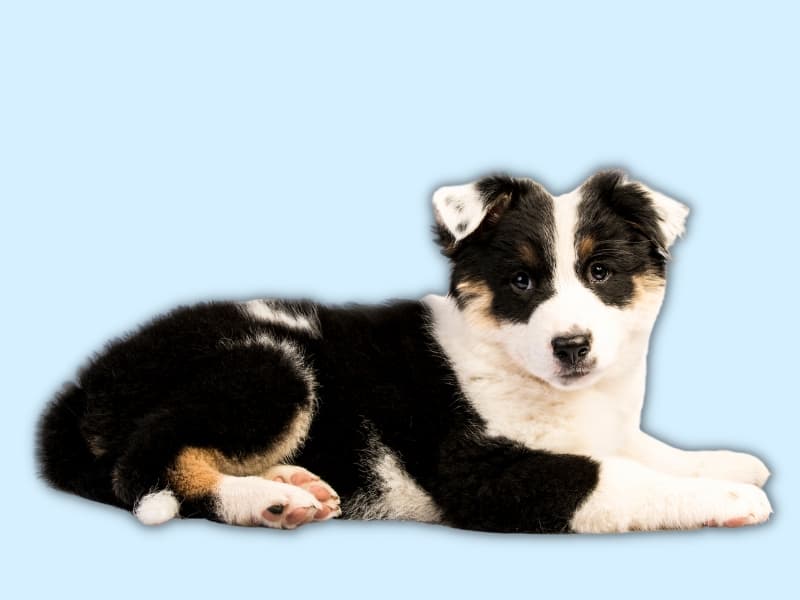
The placement of these colors can vary significantly between individual dogs.
Some Texas Heelers may have larger patches of one color, while others might present a more even distribution of all three.
Merle
Another captivating pattern is the merle coat, which is prevalent in Texas Heeler dogs.
Merle is characterized by a base color with patches of another color mixed in, creating a marbled or dappled appearance.
One of the most common merle patterns in this breed is the blue merle, which consists of a gray-blue base with black patches.
But while merle dogs are very pretty, this pattern can sometimes cause problems.
Some merle dogs can’t hear or see very well (deafness/blindness). So, it’s essential for people who breed dogs to know about this.
It’s not a good idea for two merle dogs to have puppies together.
Genetics behind merle
The merle coat color in dogs is like how we get different eye colors. Just like in people, some traits are stronger (dominant) while others are weaker (recessive).
The merle color happens because of a particular gene, kind of like a recipe, that we call the “M” gene.
A dog needs at least one “M” gene from its parents to have a merle coat.
That means a merle dog has one “M” gene and one regular, or non-merle, gene called “m.” So, its gene recipe is “Mm.”
On the other hand, a non-merle dog doesn’t have the “M” gene; it has two “m” genes instead. So, its recipe is “mm.”
That’s why it doesn’t have the merle coat color.
Speckled
Speckled coats are another distinct pattern found in Texas Heeler dogs.
This pattern features small spots or flecks of color scattered across the coat, giving it a dappled appearance.
The pattern is defined by small clusters of white hair randomly distributed across the dog’s coat.
The speckled pattern tends to be more common in dogs with a higher percentage of Australian Cattle Dog in their lineage.
Texas Heelers can have red speckle or blue speckles. The patterns are distinctly different.
A good reference for information on speckling can be found on the Australian Cattle Dog Club of America’s website.
Mottled
The mottled pattern is an interesting variation found in Texas Heelers.
Mottled coats have irregular patches of one color on a contrasting base color.
Mottling can be subtle or more pronounced, depending on the specific dog.
Similar to speckling, there can be red or blue mottling. It is a trait that is passed on from the Australian Cattle Dog.
Overall, the various coat patterns of Texas Heelers are fascinating and just one of the many unique aspects of this breed.
As an enthusiast, I enjoyed delving into the different patterns and learning about their ancestry’s role in their appearance.
Do you have a Texas Heeler? Let me know their coat color and pattern in the comments below!



I like it! You did a good job. It’s to bad you couldn’t use real pictures lol. You email me and I’ll send you some pictures of my TH.
She’s turning four July 23rd and she’s an F1 Blue Merle with lots of white, red/tan points. Not only does she have the Merle gene, she has one copy of the pie bald. All of her genes should produce some beautiful babies so her puppies should be really pretty.
I bred her to another F1 but he’s mostly black with black speckling in his chest and belly.
Anyway, I love the breed, they’re my new favorite of all time!!
Destiny Armstrong
Washington State
I have a white Heeler with mostly white soft with some (but very little) black spots. She was the only white in her letter, all the other 5 were blues. We found that she is deaf but using a vertexing collar she will come right to us with hand singles. Like our service dog (a blue heeler with 1/2 mask) she is going to make a good service dog. She lets me know if my husband needs me, or if I need him. If they both go out to the year she comes in to check on us and makes sure we are alright. There are over 10 Heelers in our area that I know of that are service dogs and are fast to train for people, that have them. Most of us found that they train themselves.
Were the parents merles? I’ve been reading about double merles, because our new puppy seems very much like yours, almost all white with a few faint spots, and he also seems to be deaf.
But neither of his parents were a merle… So we are very confused as to what is actually going on!
Did the breeders have the parents tested for the merle gene? Your pup could be cryptic or phantom merle – or the parents could be. I would reach out to the breeder because they will continue to have puppies with health problems such as deafness if they choose to breed the same two dogs.